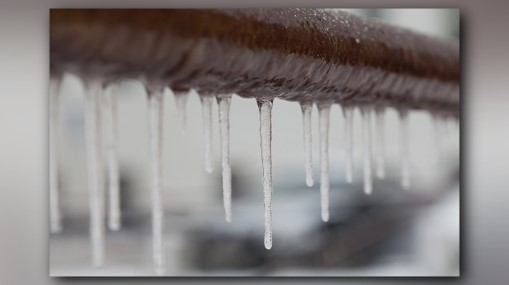Each person may have their own unique conception on the subject of Preventing and dealing with frozen pipes.

Winter can damage your plumbing, specifically by freezing pipes. Right here's how to stop it from happening and what to do if it does.
Intro
As temperatures decrease, the threat of icy pipes rises, potentially leading to expensive repair services and water damages. Recognizing just how to stop icy pipelines is important for property owners in chilly climates.
Understanding Icy Pipes
What triggers pipes to ice up?
Pipes freeze when subjected to temperatures listed below 32 ° F (0 ° C) for prolonged durations. As water inside the pipelines freezes, it broadens, putting pressure on the pipe wall surfaces and potentially creating them to rupture.
Risks and problems
Icy pipes can lead to water disruptions, residential property damage, and costly repair services. Burst pipelines can flood homes and create extensive architectural damages.
Indications of Frozen Piping
Recognizing frozen pipelines early can stop them from breaking.
How to identify icy pipelines
Search for lowered water flow from faucets, uncommon smells or sounds from pipelines, and visible frost on subjected pipelines.
Avoidance Tips
Insulating susceptible pipes
Wrap pipelines in insulation sleeves or make use of heat tape to protect them from freezing temperatures. Focus on pipes in unheated or outside areas of the home.
Home heating methods
Maintain interior areas properly heated, specifically locations with plumbing. Open up closet doors to allow cozy air to circulate around pipelines under sinks.
Protecting Exterior Pipes
Garden hoses and exterior faucets
Separate and drain pipes yard hoses before winter months. Install frost-proof faucets or cover outside taps with insulated caps.
What to Do If Your Pipes Freeze
Immediate activities to take
If you suspect frozen pipes, maintain taps open to eliminate stress as the ice thaws. Utilize a hairdryer or towels soaked in hot water to thaw pipes slowly.
Long-Term Solutions
Architectural modifications
Think about rerouting pipes away from outside wall surfaces or unheated locations. Add additional insulation to attics, cellars, and crawl spaces.
Updating insulation
Purchase top quality insulation for pipelines, attics, and walls. Correct insulation helps keep regular temperature levels and minimizes the risk of icy pipes.
Conclusion
Preventing icy pipes calls for aggressive measures and fast actions. By understanding the reasons, signs, and preventive measures, house owners can secure their pipes during winter.
6 Proven Ways to Prevent Frozen Pipes and Protect Your Home
Disconnect and Drain Garden Hoses
Before winter arrives, start by disconnecting your garden hoses and draining any remaining water. Close the shut-off valves that supply outdoor hose bibs and leave the outdoor faucet open to allow any residual water to drain. For extra protection, consider using faucet covers throughout the colder months. It’s also important to drain water from any sprinkler supply lines following the manufacturer’s directions.
Insulate Exposed Pipes
Insulating your pipes is an effective way to prevent freezing. Pipe insulation is readily available at home improvement stores and is relatively inexpensive. Pay close attention to pipes in unheated areas such as the attic, basement, crawl spaces, or garage. Apply foam insulation generously to create a buffer against the cold. You can also wrap your pipes in heat tape or thermostat-controlled heat cables for added warmth.
Seal Air Leaks
Inspect your home for any cracks or openings that could let in cold air. Seal any holes around the piping in interior or exterior walls, as well as the sill plates where your home rests on its foundation. Additionally, make sure to keep your garage door closed unless you’re entering or exiting. Leaving it open creates a significant air leak that can lead to frozen pipes.
Allow Warm Air Circulation
During cold snaps, it’s essential to allow warm air to circulate evenly throughout your home. Leave interior doors ajar to promote better airflow. Open kitchen and bathroom cabinets to help distribute heat consistently around the rooms. If you have small children or pets, be sure to remove any household chemicals or potentially harmful cleaners from open cabinets for safety.
Let Faucets Drip
A small trickle of water can make a big difference in preventing ice formation inside your pipes. When temperatures drop significantly, start a drip of water from all faucets served by exposed pipes. This continuous flow helps prevent the water from freezing. Additionally, running a few faucets slightly can relieve pressure inside the pipes, reducing the chances of a rupture if the water inside does freeze.
https://choateshvac.com/6-proven-ways-to-prevent-frozen-pipes-and-protect-your-home/

Do you enjoy reading about How to Prevent Your Pipes From Freezing? Try to leave a review down below. We would be delighted to see your thinking about this post. We hope to see you back again in the near future. Sharing is good. One never knows, you may very well be doing someone a favor. I appreciate your readership.
Call Today
Comments on “Important Advice for Preventing Frozen Plumbing in Winter Conditions”